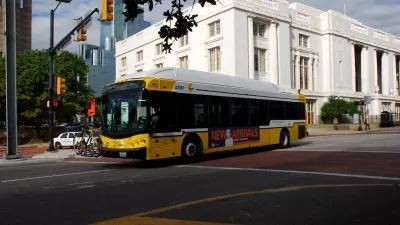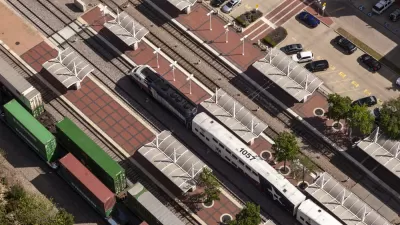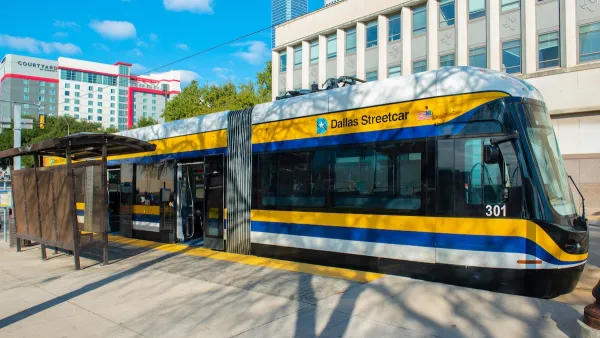The Dallas region is the latest to update its transit system on a high-frequency grid with on-demand transit service to fill in the gaps.

Alanna Quillen and Ken Kalthoff report for NBC DFW that Dallas Area Rapid Transit (DART) on January 24 launched a complete system redesign, dubbed DARTzoom.
According to Quillen and Kalthoff, the DARTzoom redesign affects transit service in all 13 DART cities in the Dallas region. "Many bus stops changed locations or closed and some routes were eliminated," according to the article. DART officials are suggesting that riders use the newly expanded GoLink to fill gaps in the new system with on-demand transit service.
The DART website provides a comprehensive list of service changes.
For more news on the DARTzoom plan, an article by Alex Cruz for WFAA from September 2021, when DART announced the redesign, focuses more on the desired benefits of the redesign, including more direct bus routes and fewer stops—another example of the high frequency grid approach to transit system planning that has gained popularity in recent years.
"Through the new plan, DART officials said 74% of service area residents will have access to bus services within walking distance, which is a 6% increase from the current design," reports Criz in September. DART officials also touted the DARTzoom's increased access to jobs. "The DARTzoom Bus Network Redesign will increase the number of jobs that an average resident of the DART service area can reach in one hour by 34% compared to the existing bus network," according to a statement from DART officials included in Cruz's article.
Yet another article, this one by William C. Wadsack for Community Impact published in January, focuses on the DARTzoom changes planned for the city of Plano.
FULL STORY: DART Kicks Off New Bus Network With Free Rides

Maui's Vacation Rental Debate Turns Ugly
Verbal attacks, misinformation campaigns and fistfights plague a high-stakes debate to convert thousands of vacation rentals into long-term housing.

Planetizen Federal Action Tracker
A weekly monitor of how Trump’s orders and actions are impacting planners and planning in America.

In Urban Planning, AI Prompting Could be the New Design Thinking
Creativity has long been key to great urban design. What if we see AI as our new creative partner?

Pedestrian Deaths Drop, Remain Twice as High as in 2009
Fatalities declined by 4 percent in 2024, but the U.S. is still nowhere close to ‘Vision Zero.’

King County Supportive Housing Program Offers Hope for Unhoused Residents
The county is taking a ‘Housing First’ approach that prioritizes getting people into housing, then offering wraparound supportive services.

Researchers Use AI to Get Clearer Picture of US Housing
Analysts are using artificial intelligence to supercharge their research by allowing them to comb through data faster. Though these AI tools can be error prone, they save time and housing researchers are optimistic about the future.
Urban Design for Planners 1: Software Tools
This six-course series explores essential urban design concepts using open source software and equips planners with the tools they need to participate fully in the urban design process.
Planning for Universal Design
Learn the tools for implementing Universal Design in planning regulations.
planning NEXT
Appalachian Highlands Housing Partners
Mpact (founded as Rail~Volution)
City of Camden Redevelopment Agency
City of Astoria
City of Portland
City of Laramie





























